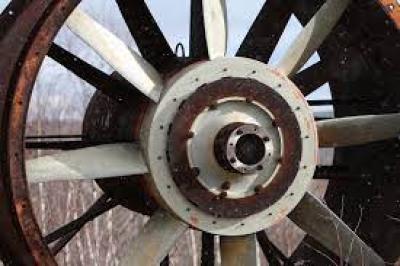Why was Ventilation machinery Inside gassy Mine instead of Outside it?
Pike River Families access to official documents relating to the mine detonation and the death of 29 miners could shine light onto the mystery relating to the ventilation equipment and its associated electrics being installed at the bottom of the mine instead of outside the workings.
The Royal Commission in the aftermath of the Pike River mine tragedy described the internal position of the ventilator as a “world first.”
Experts consulted during the inquiry constantly returned to the conundrum relating to why the ventilation equipment was housed within the coal mine instead of outside it….the practice everywhere else.
Precisely why was the ventilation plant within the mine instead of safely outside it?
Was this electrical plant location related in any way to adhering to environmental considerations?
The Paparoa National Park was created in 1987 a number of years after the area had been identified as a source of premium grade coal used in steel making.
On Friday 19 November 2010 at 3:45pm there was an underground explosion at the Pike River coal mine. Twenty-nine men lost their lives, and their bodies have not been recovered..
The High Court has now ruled that the bereaved families may now examine the privileged material that led to the decision to abandon charges against elements of the Pike River Mine management.
There will be interest in the extent to which this material may relate to the circumvention of standard practice in order to meet environmental covenants.
The structural framework of the coal mine and its planning coincided with the era in which the nation’s green movement was intensifying in its electoral grip and was doing so in large measure through seeking to cancel fossil fuels in general and coal in particular.
A coal mine that operated in the vicinity of an only recently proclaimed National Park now of itself became an intensely volatile project.
The mine to a certain amazement went ahead.
It did so because of its own position in a district susceptible to and sensitive to unemployment which is the West coast of New Zealand’s South Island.
The implementation of the mine also intersected with a dilution of emphasis on the nation’s mine inspectorate resources.
Technical specialists in the aftermath of the mine explosions questioned the positioning of the ventilation equipment at the bottom of the mine instead of being positioned outside it.
This was especially so because the mine from the outset was known to be exceptionally gassy in its workings because of its coal seams being so prone to absorbing and then leaking the invisible methane gas
Methane threatens all underground coal mines everywhere especially New Zealand coal mines.
This is simply because these mines are of relatively recent geological formation meaning that the vegetation that eventually becomes coal is still decomposing and in this active reduction process emits the extra volumes of methane.
Ventilators are driven by electrical motors that by definition emit sparks.
Sparks fly upwards.
So does methane which being much lighter than air seeks to become part of the atmosphere.
Methane in common with other fossil gases becomes combustible, ignites, when mixed with the air.
The mine disaster aftermath coincided with a still evolving societal sensitivity most evident in the mass media sector.
Its haughty disdainful we-know-what’s-best-for-you condescension adds up to a reluctance, even refusal, to challenge or even question anything from the climate industry’s well-placed alarmists.
The decision by the High Court to permit the Pike River Families free access to the official papers relating to the abandonment of the pressing of charges against mine management opens up what may be the most revealing chapter of the disaster.
Were there other priorities than the preservation of human life?
Who or what persuaded, insisted, or allowed the mine management to take the additional risk of positioning inside the mine its ventilation plant?
The families of the brave miners in their persistence may now be instrumental in solving one of the biggest operational mysteries puzzling the extractive sector everywhere.
Perhaps even the biggest.

